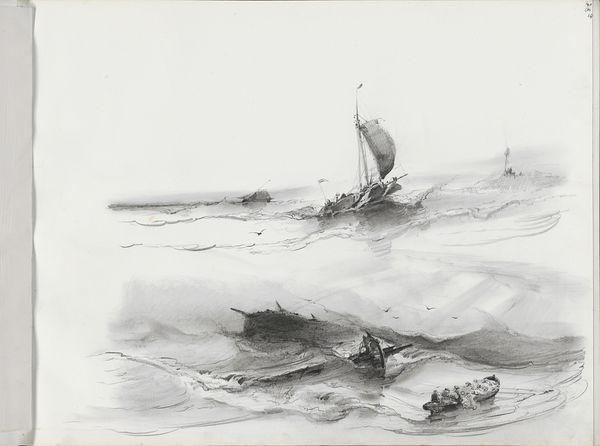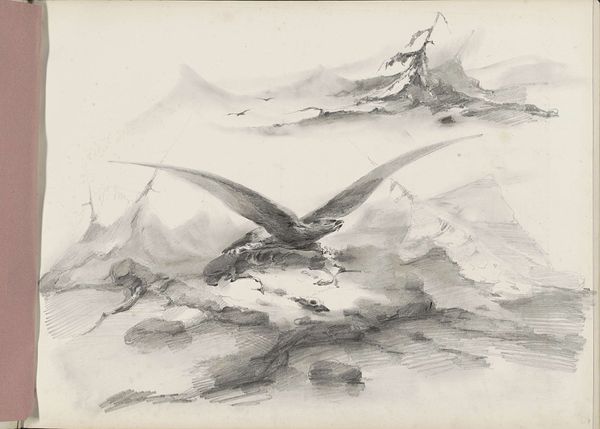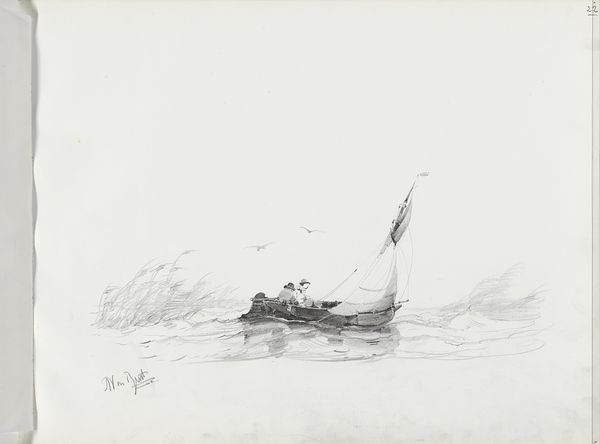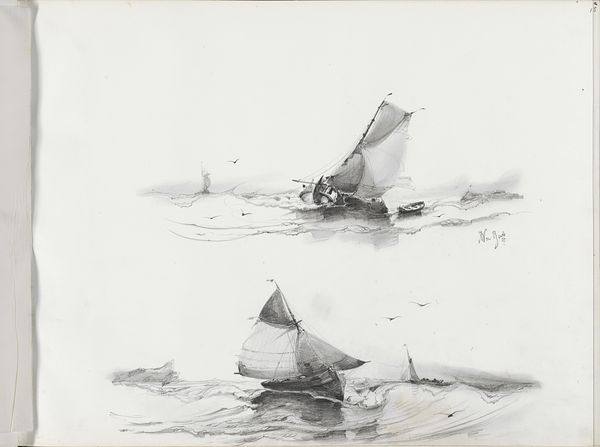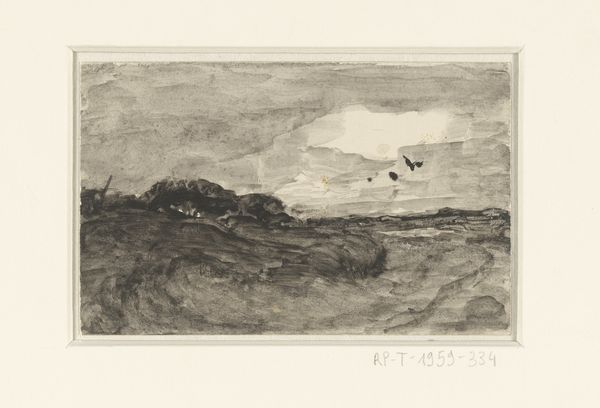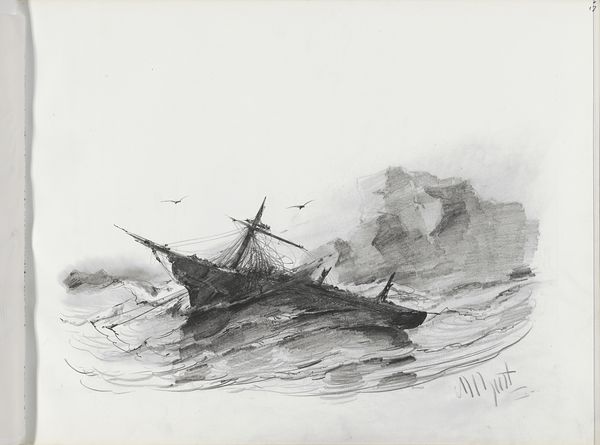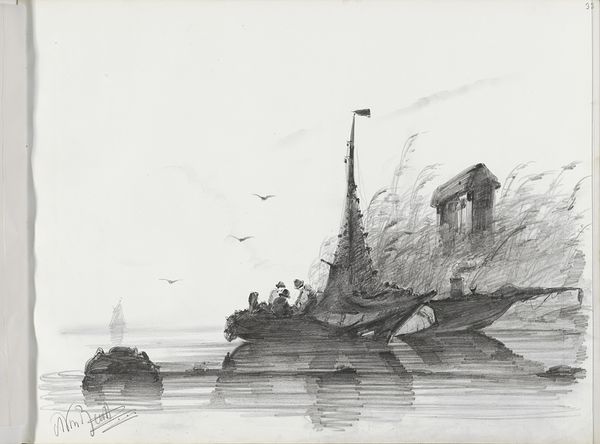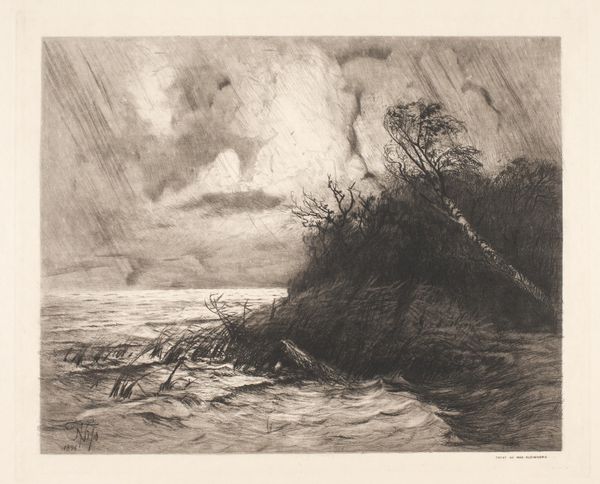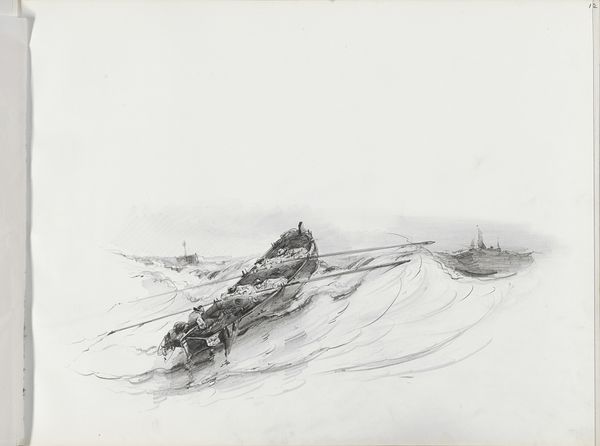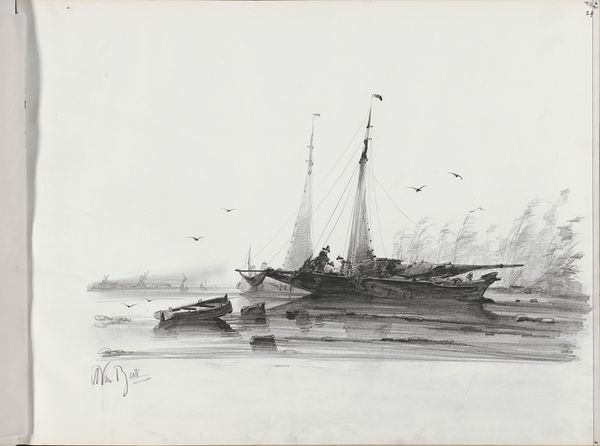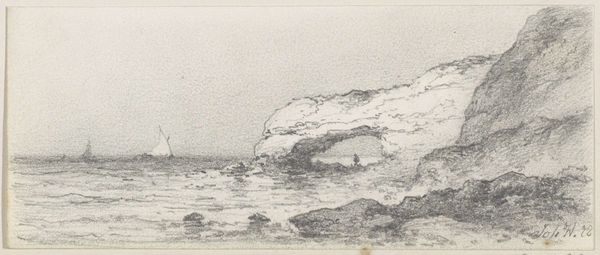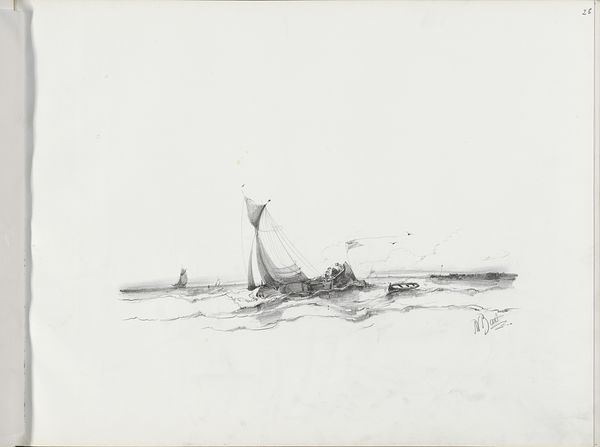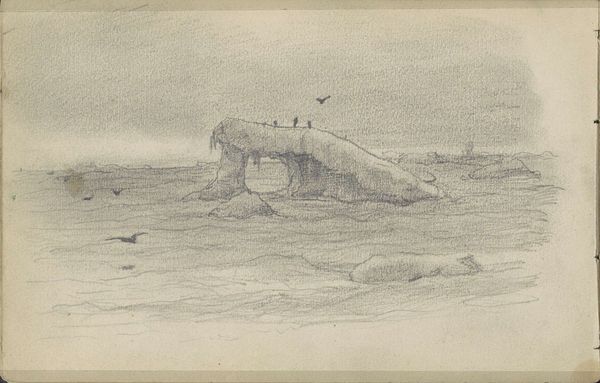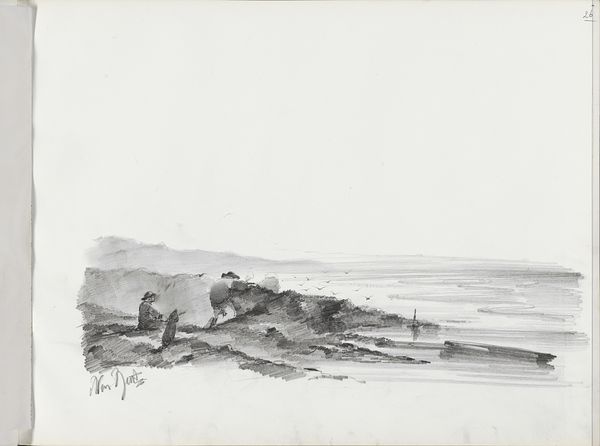
drawing, pencil
#
drawing
#
pencil sketch
#
landscape
#
pencil
#
realism
Copyright: Rijks Museum: Open Domain
Editor: So, this is “Seagulls on a Rocky Coast” by Albertus van Beest, made sometime between 1830 and 1860. It's a pencil drawing, and it gives me a feeling of quiet solitude, almost melancholy. What’s your take on it? Curator: The drawing resonates with a particular era in which romanticism met a growing national identity. Picturesque seascapes were becoming quite popular, reinforcing ideas about the natural beauty and power of the Dutch landscape. The seagulls themselves - were they viewed as simple birds, or symbols of freedom? What social class or political ideology was mostly in dialogue with seascapes like these, and were there similar artworks used in national campaigns? Editor: That’s a fascinating way to look at it. I was focusing more on the artistic style and the implied narrative with the birds, like a momentary glance captured by the artist. But your points raise important questions about the potential viewers and social purpose the art could play. Curator: Exactly. Consider the Rijksmuseum’s own collection at the time. What kind of narrative around Dutch identity and artistry was promoted, and where this kind of drawings fit in the grand scheme of things? Were these easily accessible, mass-produced or aimed at wealthier patrons? Editor: I guess I had a somewhat naive understanding, seeing it as purely artistic expression. Now, I am viewing it as part of a wider system. Curator: Precisely! And knowing those historical undercurrents enrich the experience and make you a more informed viewer. Editor: I will definitely be asking about these underlying issues in my paper. Thanks so much! Curator: A great pleasure! And remember, art doesn't exist in a vacuum.
Comments
No comments
Be the first to comment and join the conversation on the ultimate creative platform.
